The leader Vidit Gujrathi drew his game against HikaruNakamura and allowed Bogdan-Daniel Deac, Fabiano Caruana and Andrey Esipenko to join him in the lead. The chasing pack consists of 11 players sitting half a point behind the leaders. In the women’s section, all three leaders, Antoaneta Stefanova, Anna Muzychuk and Rameshbabu Vaishali, drew, maintaining the lead ahead of Sophie Milliet, Leya Garifullina, Tan Zhongyi and Batkhuyag Munguntuul.
On board one, the leader Vidit Santosh Gujrathi met Hikaru Nakamura’s Sicilian with the latter’s preference – the Alapin Variation.
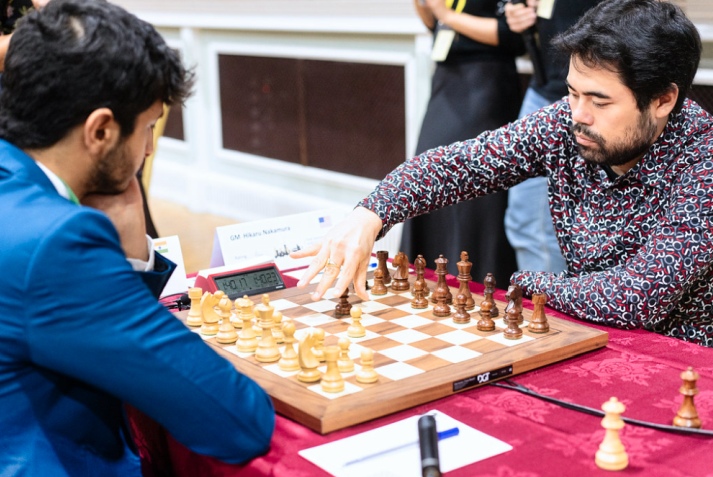
The Alapin is considered a very safe choice for White, especially in the lines where White doesn’t allow the creation of an isolated queen’s pawn (IQP) on d4. Usually, a typical situation arises where White has three pawns versus two on the queenside while Black has four pawns versus three on the kingside. These positions are slightly easier to play for White because his queenside majority is easier to move forward.
Nakamura deviated from his choice against Raunak Sadhwani from the second round, where he went for the more fighting option of the fianchetto of the dark-squared bishop. Today, he went for the more conservative development with …e6 and slightly deviated from a previous game of his (where he took 6…cxd4) in favour of the move 6…Qd8, recently also played by Magnus Carlsen.
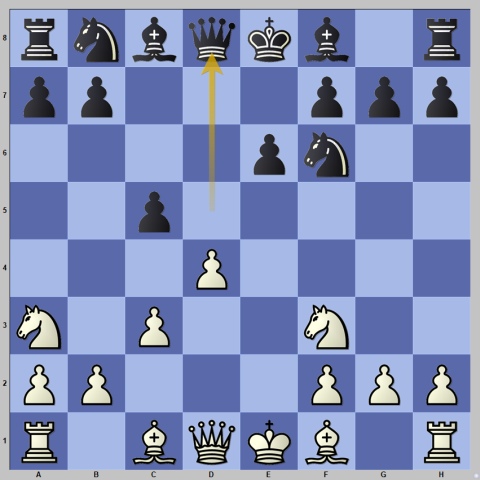
This deviation set Vidit thinking for 35 minutes (!). As he said after the game, this was an attempt to figure out the possible move-order transpositions and the best way to continue. Eventually, he went for 7.Nc4, the most commonly played move in the position.
The critical position arose on move 10.
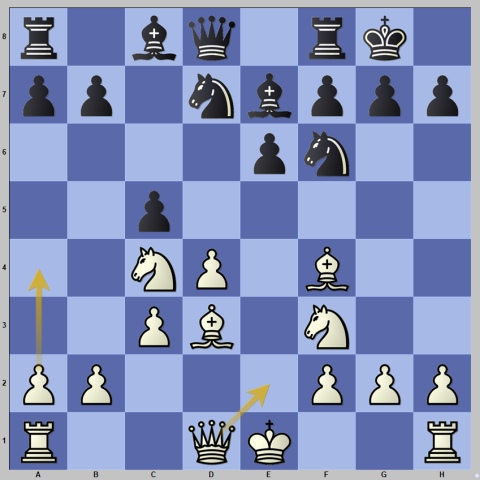
Here, White had a promising plan of 10.Qe2 followed by Nce5, h4, Ng5, possibly 0-0-0, Rh3-g3, etc., with a dangerous initiative. In the post-mortem, the players couldn’t find a satisfactory set-up for Black. When asked, Vidit said he was sorry he didn’t go for this, and the reason was that he “misevaluated the position.”
He went for 10.a4, and then a short castle, but a move repetition after …Nh5, Be3 Nhf6, Bf4 Nh5 ended the game in a draw.
On board two Fabiano Caruana used a relatively forgotten line against Etienne Bacrot’s Taimanov Sicilian. After choosing the line with 6.Be3 a6 Caruana played the move 7.a3, which for some time in the 1960s was a favourite of Mikhail Tal.
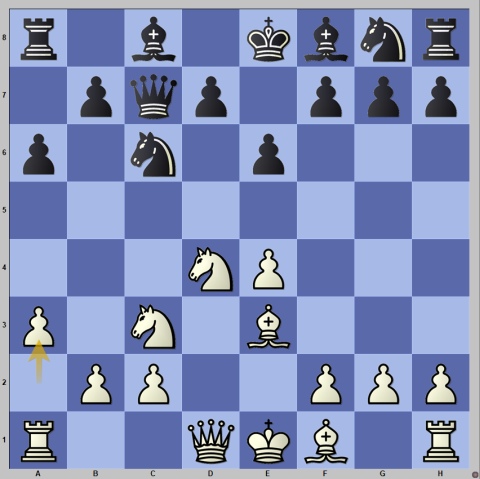
The idea of the move is to prevent the typical Taimanov pin with …Bb4, thus allowing for a more aggressive set-up with f4, Qf3, etc. This is how Tal used to play when Black replied with 7…Nf6.
Bacrot chose the more direct 7…b5, intending …Bb7 with quick queenside development while at the same time having in reserve the …b4 push. White exchanged on c6 and continued with the development of the kingside with Be2 and 0-0.
As is his habit, Bacrot started spending a lot of time, and by move 13, he had 35 minutes less than his opponent while the engine wasn’t thrilled with his position.
White continued forcefully, and after exchanging, the dark-squared bishops started to pile up pressure on the backward d7-pawn. In order to get rid of this pressure, Black pushed …d5, but this led to the creation of an IQP on d5. In addition to another isolated pawn on a6, White had a solid advantage.
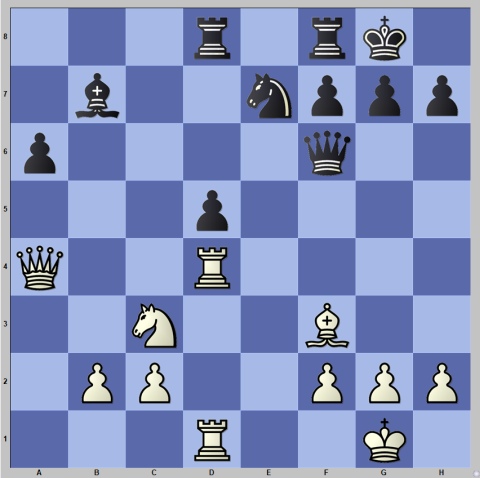
What made things worse for Black was that the position was very one-sided, and he had no counterplay.
Caruana increased his advantage, but in spite of the position being safely in his favour, it wasn’t easy to find a breakthrough.
He missed a deeply concealed one on move 31.
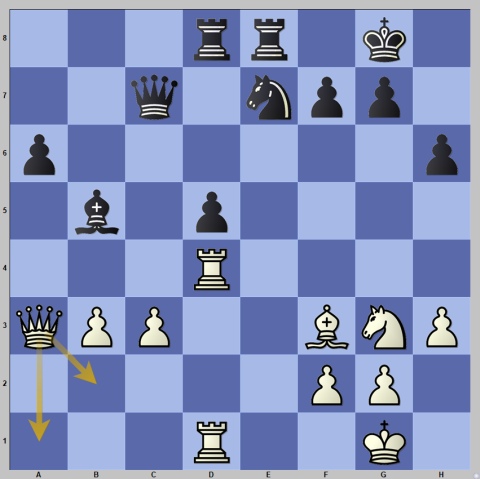
Caruana played 32.Qb2 and after 32…Rc8, the worst was behind Black. The winning move was 32.Qa1!! with the deep idea of c4 and Nh5. It is very difficult to see an attack both on the queenside (the bishop on b5) and the kingside (the mating threat on g7 after the rook leaves the d4-square). It takes a lot of imagination to discover a move like Qa1, something the Great Wizard of Riga had in abundance. Unfortunately, playing Tal’s variation in the opening wasn’t enough for Caruana to complete the full circle and play like Tal the whole game. The lines are not easy to calculate but had Caruana spotted the idea, he would undoubtedly have seen the lines, too.
After missing this chance, Caruana couldn’t do much against Bacrot’s precise defence, and the game was heading to a draw. However, Bacrot’s time trouble cost him the most important half a point.
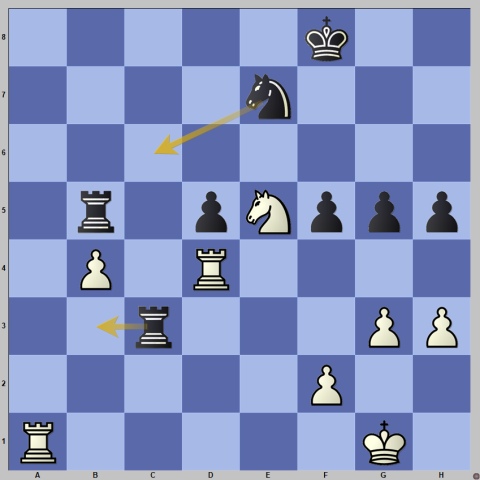
Black’s position is exposed, but he can still draw after 55…Rb3. In the game he played 55…Nc6? which after 56.Nxc6 Rxc6 57.Ra5! forced a winning rook endgame for White. After the exchange on a5, White placed a rook behind the passed a-pawn, and Bacrot resigned.

On board three Andrey Esipenko had some “compensation” for being caught in the opening yesterday, as today he did the same with Vincent Keymer in some sharp preparation in the Reti Opening, at least judging by the time both players spent on their first 19 moves.
Keymer opted for the early advance of the d-pawn, a line that became popular after Magnus Carlsen used this type of development in his match against Ian Nepomniachtchi in game nine of their match in Dubai in 2021, a game that Carlsen won.
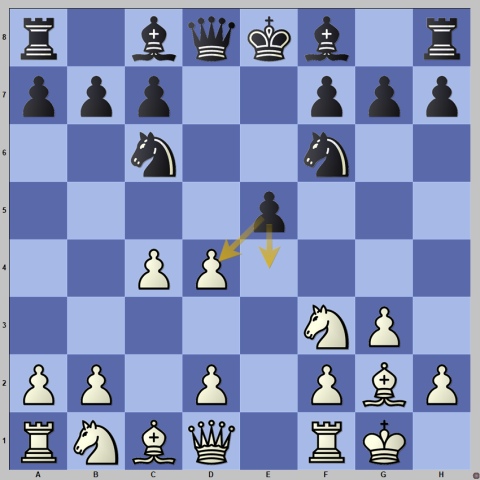
In this position, the automatic recapture on d4 with the pawn would lead to calmer play, but Keymer went for the engine’s preferred line of 7…e4, which was met by the engine’s second choice of 8.d5. White sacrificed material to obtain strong central pawns on d5 and e5.
Keymer started spending a lot of time on his moves (for example, his 11th move took him almost 20 minutes) while Esipenko continued to play a-tempo. The curious thing was that both players followed the engine’s best line, a clear indication that they had analysed this before, with the difference that Esipenko had revised his notes before the game while Keymer was trying to remember his.
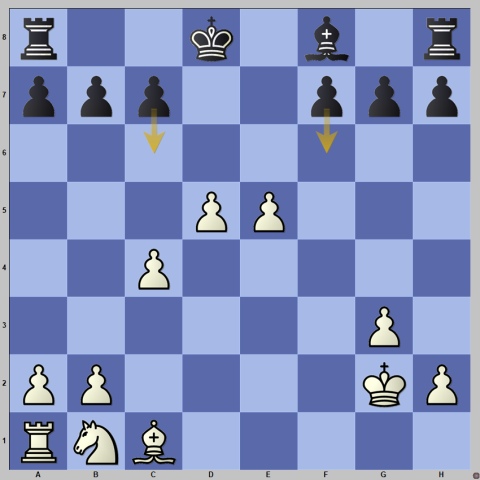
Here the engine suggests chipping away at White’s centre by 18…c6 (or 18…Kd7 and then …c6), but after 13 minutes of thought Keymer played 18…f6 first and after 19.e6 c6. He obviously remembered the undermining idea of …c6, but over the board, he played …f6 first.
The positive aspect of this inclusion of …f6 was that it finally took Esipenko out of the book, and the position objectively still stayed around equal.
It’s not easy to play with two connected passed pawns staring at you from a short distance, and Keymer couldn’t handle the problems, either.
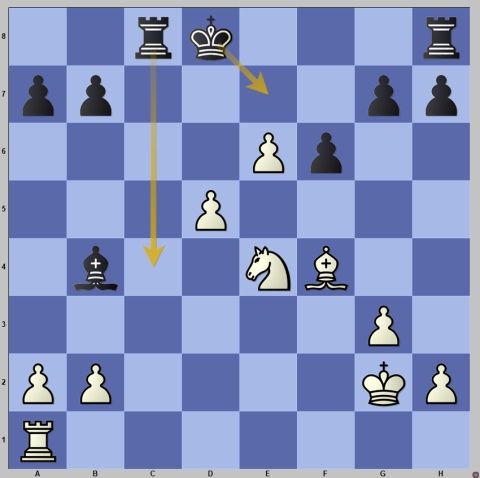
Black should have played 23…Ke7 with the idea of …Rfd8, to control the d6-square and prevent a possible d6 by White. Keymer’s plan of 23…Rc4? with the idea to control the d-pawn with the rook from the d4-square, backfired after 24.Kf3 Rd4 25.a3! when Black’s bishop was short of squares on the a3-f8 diagonal, and the d6 move became inevitable.
Before pushing d6, White wanted to improve the position of his knight by transferring it via d6 to f5, but this unexpectedly gave Black a chance.
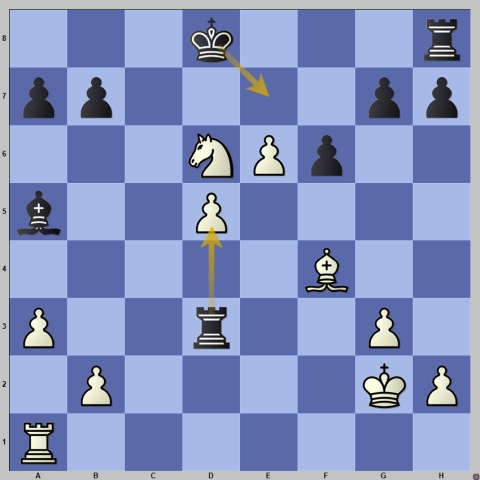
Black should have bitten the bullet with 27…Rxd5! 28.Nf7 Ke7 29.Nxh8 g5 30.Be3 Kxe6, where he is a piece down, but the knight on h8 won’t come out easily and Black finally destroys the dangerous pawns. This would have made Black’s position so much easier to play, even though White still keeps winning chances.
Vincent played 27…Ke7 instead, but this allowed White to execute his idea with 28.Nf5 with d6 next. When the pawns reached d6 and e7, Black was forced to return the exchange and eventually ended in an endgame with a rook and bishop for each side, but White had two extra pawns.
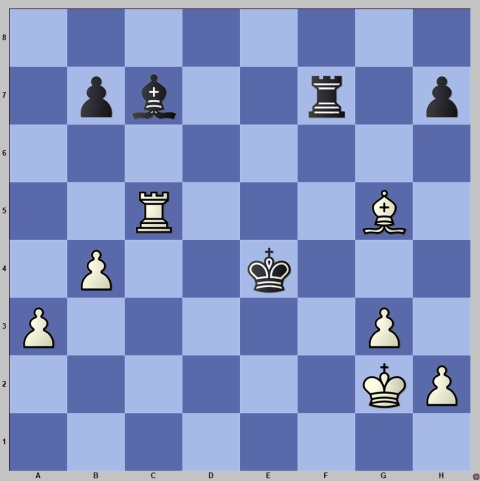
White patiently converted the advantage sealed the deal on move 55.
On board four Arjun Erigaisi chose the Exchange Variation of the Queen’s Gambit Declined against Yuri Kuzubov. It has always been a popular choice against one of the most solid openings in chess, but in the last several years, it really experienced a true revival for both sides as new ways of playing were discovered.
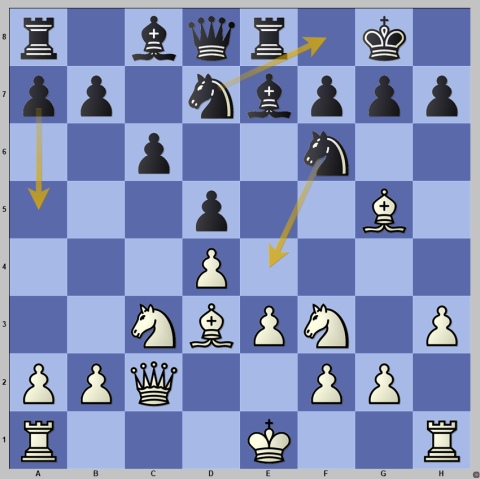
One of these ideas was played by Kuzubov. Instead of the standard moves 10…Nf8 or 10…Ne4 Black played 10…a5. Black takes some space on the queenside and tries to dissuade White from castling long as then a pawn storm with …b5-b4, …a4 can come more quickly.
It probably takes something stronger to dissuade Erigaisi, as on move 14 he actually castled queenside!
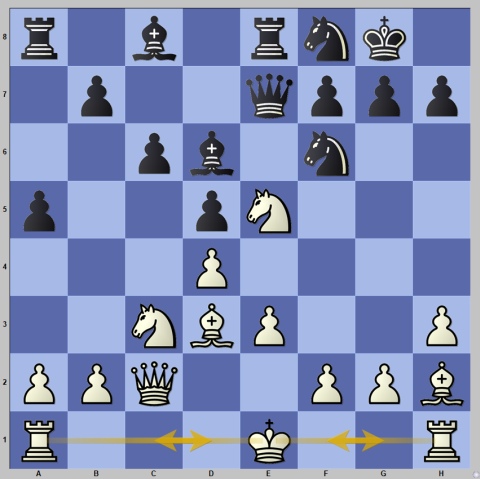
Instead of the calmer 14.0-0, White played 14.0-0-0 and while the engine frowned upon this choice, it did give the game a much sharper course.
In the complicated middlegame, the players had to navigate play in the centre with play on the wings. Kuzubov spent more time than his opponent, and after move 25, he had only three minutes to reach the time control.
It was exactly on the next move when White missed a very promising opportunity.
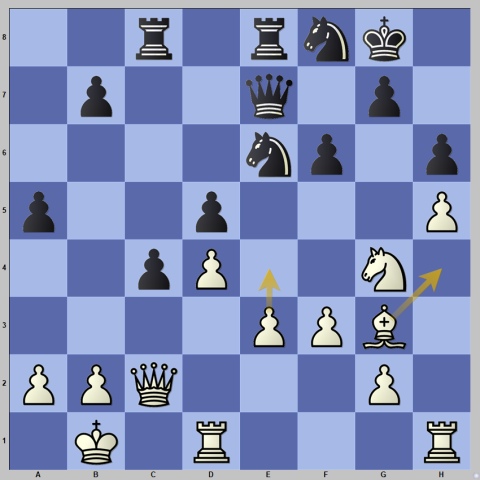
Black’s last move was 25…h6, stopping White’s h-pawn but weakening the light squares on the kingside. White could have taken advantage of that weakening with the very strong pawn sacrifice 26.e4! (freeing the e3-square for the knight transfer) dxe4 27.Ne3 exf3 28.Nf5 Qd7 29.gxf3. As Kasparov used to say, a knight on f5 (when Black has castled short) is worth at least a pawn, and White has more than enough compensation for the material deficit. He can combine the threat of d5-d6 with play on the kingside along the g-file.
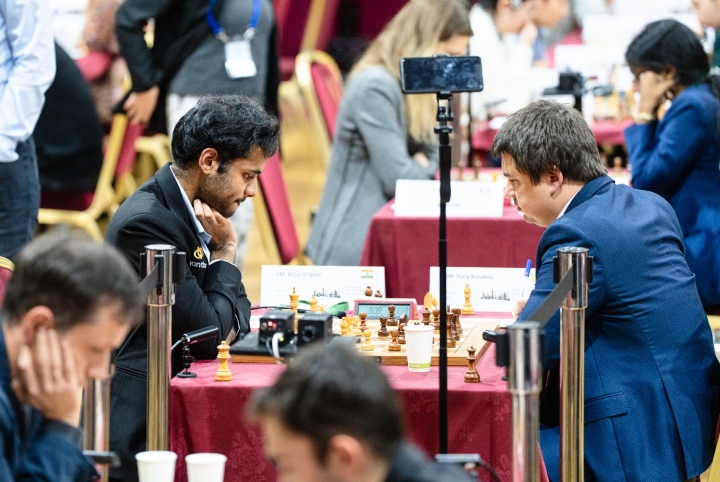
This idea would have given White excellent chances, but Erigaisi missed it and played 26.Bh4, after which the position was dynamically balanced.
White concentrated on pushing e4, and when he managed, Black missed his chance to become active himself on the queenside by pushing …c3. This gave White an advantage, but mutual imprecisions followed in mutual time trouble.
After the time control, they reached an endgame that was approximately equal.
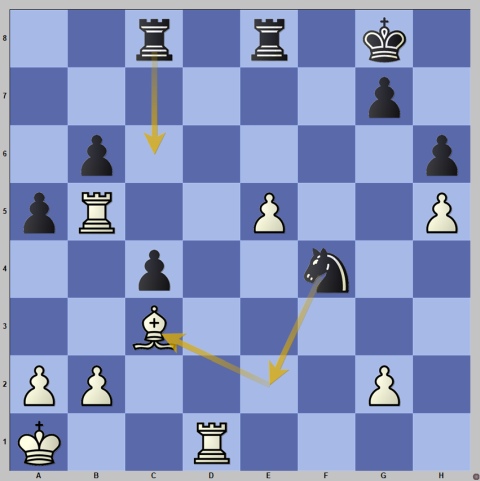
White’s passed e-pawn is safely blockaded on the e6-square, and the b6-pawn can be defended by a rook along the sixth rank.
Black decided to exchange White’s bishop by 41…Ne2xc3, defended the pawn on b6 by …Rc6 and blockaded the passed e-pawn with his king. This was enough to hold the draw, which was agreed upon on move 58.
There were four very important wins for the players with the White pieces: Bogdan-Daniel Deac suffocated Radoslaw Wojtaszek on the queenside, Samuel Sevian outplayed the rating favourite Alireza Firouzja, Alexey Sarana finely combined play on the queenside with play against Richard Rapport’s king and Ivan Cheparinov pounced on a one-move endgame blunder by Jan- Krzysztof Duda.
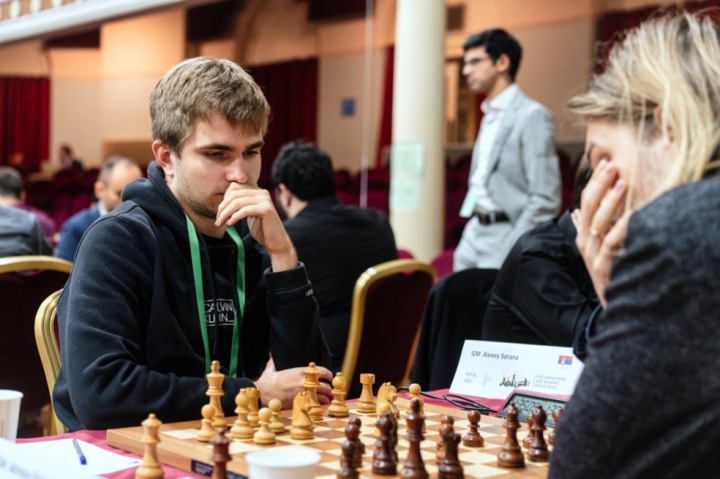
There was only one important win with the black pieces, that by Parham Maghsoodloo, whose pawns overran Samvel Ter-Sahakyan’s center. All the winners joined the chasing pack together with Hikaru Nakamura, Yuri Kuzubov, Aleksandr Predke and Vladimir Fedoseev, only half a point behind the leaders Santosh Gujrathi Vidit, Andrey Esipenko, Bogdan-Daniel Deac and Fabiano Caruana.
In the women’s section, the duel between the leaders Anna Muzychuk and Antoaneta Stefanova saw the rarely played Jaenisch Gambit in the Ruy Lopez. While this choice by Stefanova must have been a surprise for Muzychuk, both players continued to play fast along one of the main lines. Muzychuk played a rare 15th move.
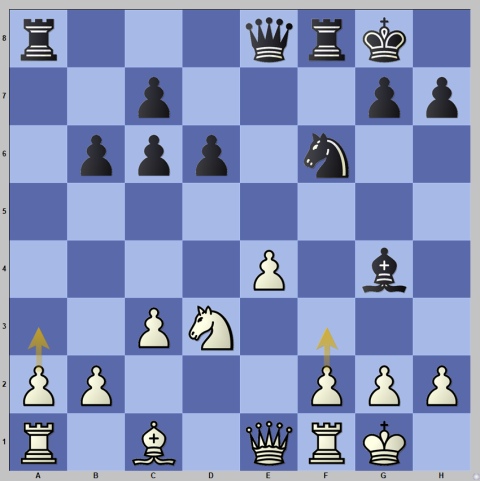
Most games have continued with 15.f3 Be6 16.a3, but after only four minutes, Muzychuk played the immediate 15.a3.
Stefanova offered a transposition with 15…Be6, but Muzychuk declined it with the central thrust 16.e5, which gave rise to some complications.
Stefanova pinned White’s knight with 16…Bc4 and White’s e-pawn made a career by taking the knight on f6 and the pawn on g7, while Black took the knight on d3.
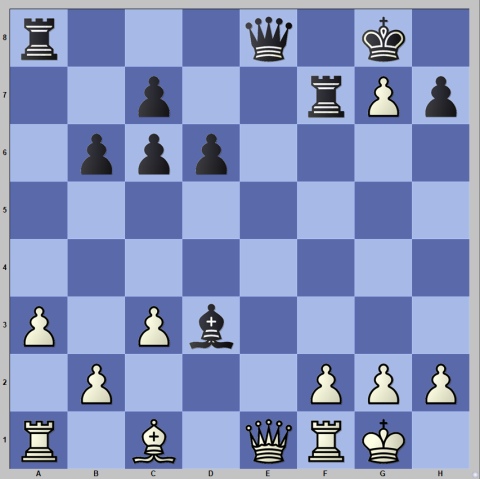
White had to make room for the rook on f1, but after the exchange of queens, the only square it could go to was d1. There it was attacked by the bishop from c2, when the rook could only go back to f1. The bishop attacked the rook again with …Bd3, and the players agreed to a draw in view of the repetition of moves.
On board two, Rameshbabu Vaishali allowed a double-edged exchange of her dark-squared bishop for a knight against Sophie Milliet. This opened the f-file for White. It didn’t take long for this to tell.
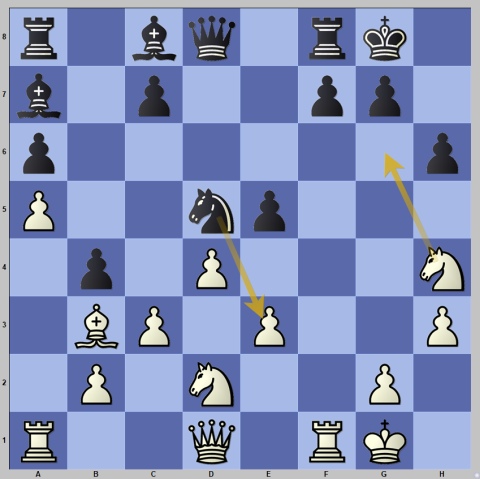
Black’s last move was a mistake; she should have taken on d4 first to remove the e5-pawn because that pawn hangs after White’s powerful 17.Ng6!
Black took on e3, forking the queen and rook, but White followed up with the thundering 18.Rxf7!
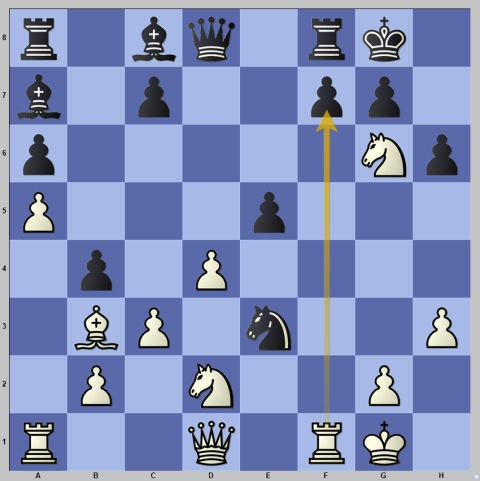
White threatens a double-discovered check with Rxf8, so Black doesn’t have time to take White’s queen. After 18…Rxf7 19.Qf3 White had a big advantage as after 19…Qf6 20.Nxe5 followed by exchange of queens, White picked up the rook on f7 and emerged a pawn up plus extremely active minor pieces.
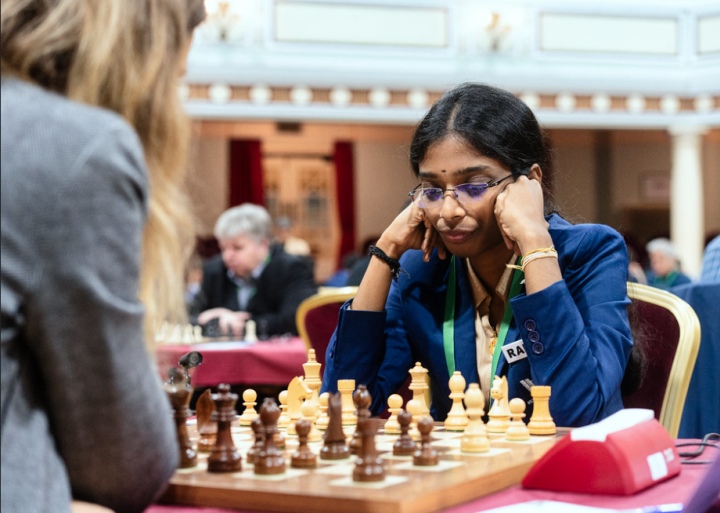
The position remained very tactical, and both players were very low on time. Milliet defended tenaciously using her bishops and managed to reduce the material as much as possible. When they finally reached the time control Black could feel confident not to lose the following endgame.
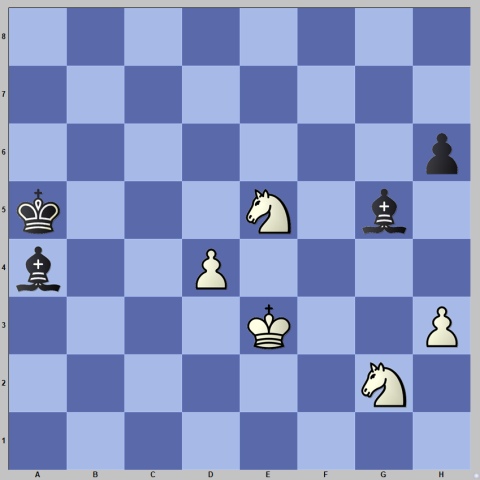
White tried in vain to induce a mistake, but her best chances were long gone. The game ended in a draw on move 70.
On board three Tan Zhongyi didn’t manage to pose any serious problems after Aleksandra Goryachkina chose her favourite Berlin Defence. Black was well-prepared and the game went into an equal endgame.
White was still somewhat more active and on move 22 Black had to react with some precision.
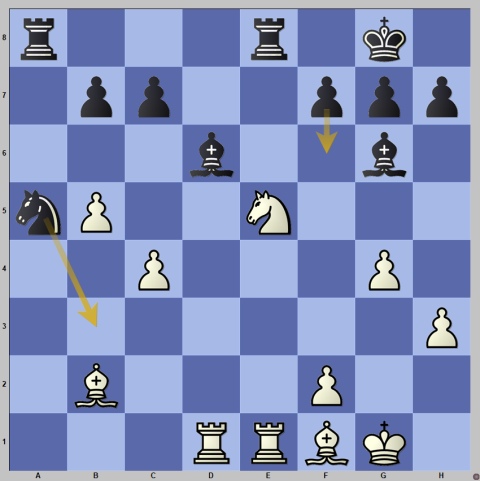
White goes after the bishop pair, and in order to compensate for its loss, Black had to find the accurate 22…Nb3! with the idea to transfer the knight to the untouchable square on c5. The strong knight would defend the pawn on b7, thus neutralising the pressure on the long diagonal.
Goryachkina missed this and played the natural 22…f6?! but after 23.Nxg6 Rxe1 24.Rxe1 hxg6 25.Bg2, the knight was now stuck on the rim in order to defend the pawn on b7.
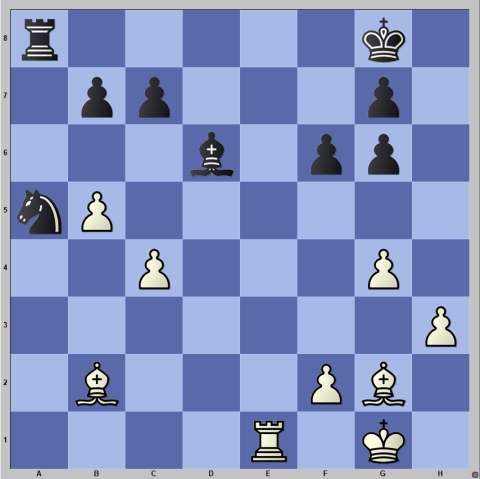
The difference between the c5 and a5 squares is apparent, and Black already had serious problems with a stranded knight and a strong bishop pair for her opponent.
White methodically increased her advantage. After improving the position of her pieces, she opened a second front on the kingside.
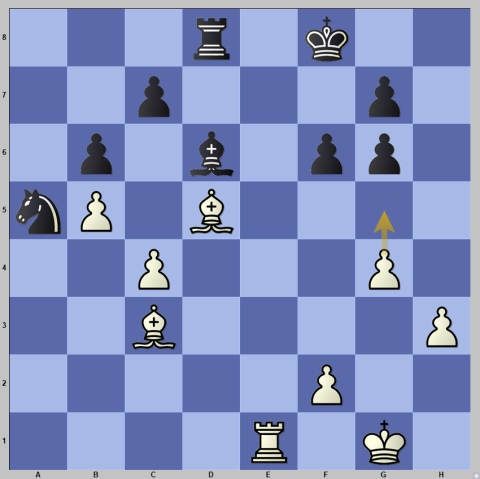
White played 28.g5!, the point being that taking the pawn after 28…fxg5 29.Re6 leads to a complete annihilation of Black’s kingside. Black didn’t find anything better than giving up a pawn by letting White take on f6 twice.
After winning the pawn, Tan Zhongyi didn’t allow a single chance, when converting her advantage.
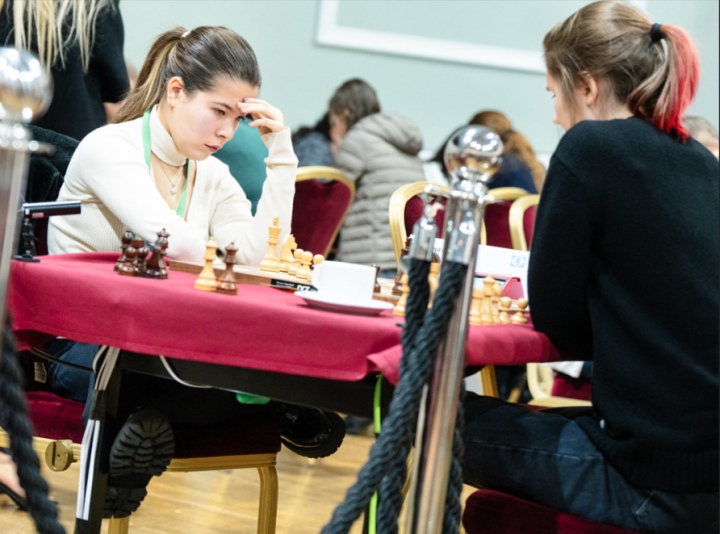
On board four, Leya Garifullina and Polina Shuvalova repeated a game by the latter from last year. In the popular line of the Ruy Lopez where White plays d3, Nc3 and a3, Black improved on her own play and obtained a satisfactory position.
In the complex middlegame that ensued, both players missed their best chances, Black to solve all her problems and White to pose more serious problems.
The game reached an endgame where White won a pawn, but Shuvalova had foreseen the only defence.
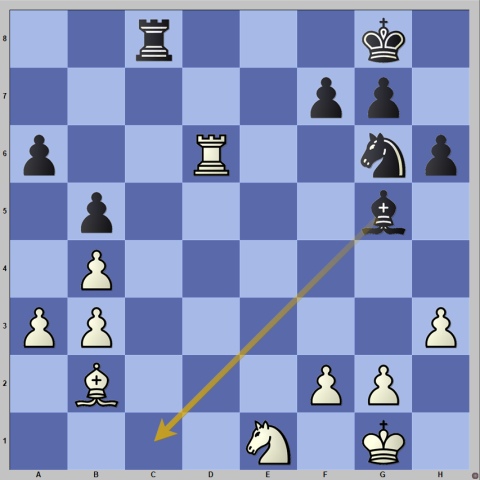
Black found 28…Bc1! which either activates her rook in case of an exchange, or Black wins the pawn on a3 in case White moves the bishop. White exchanged the bishop and played Kf1, still intending Rxa6, but Black was in time with her counterplay after …Nf4.
However, instead of going after the a3-pawn, which would have White with useless doubled b-pawns won a pawn, Black went after the b3-pawn, which left White with a pawn up on the queenside.
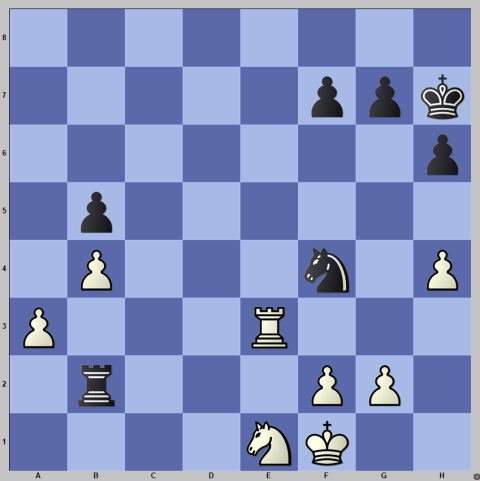
It was not easy to untangle for White, and Leya made the wrong choice, exchanging her a3-pawn for Black’s f7-pawn. The problem with this trade was that it weakened the b4-pawn, so Black had counterplay by attacking it.
After the time control, the opponents reached the following position.
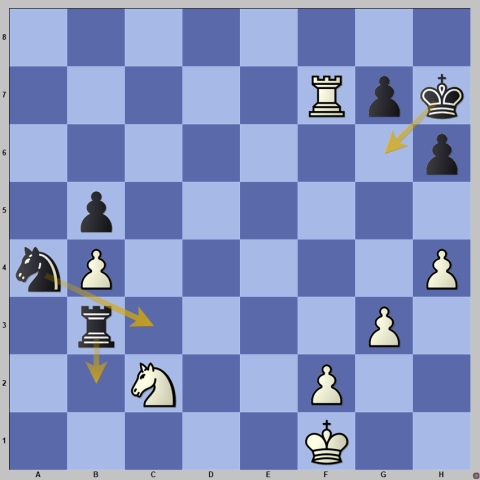
Black has good drawing chances after 41…Nc3 or 41…Rb2, but she was worried that White might create an attack on her king, so she continued with 41…Kg6, which after 42.Rb7 Rb2 43.Ne3 put her in a position to find the only saving move.
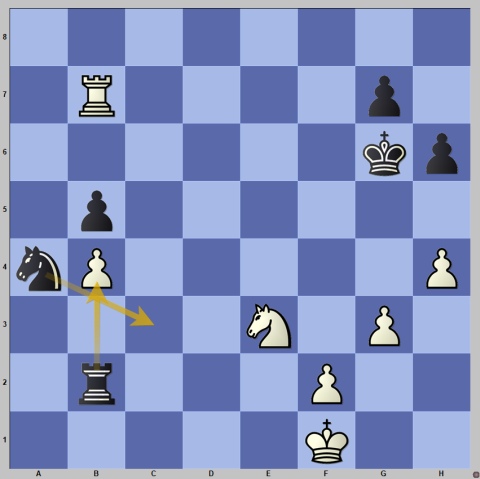
Black had to take the pawn on b4. It looks very scary after 43…Rxb4 44.h5! Kh7 45.Nf5 Rg4 46.f4, but Black miraculously holds. A very difficult line, so it’s understandable why Black didn’t go for it. What she did was worse, though, as after 43…Nc3 44.h5! Kxh5 45.Rxg7, she suddenly found herself in a mating net.
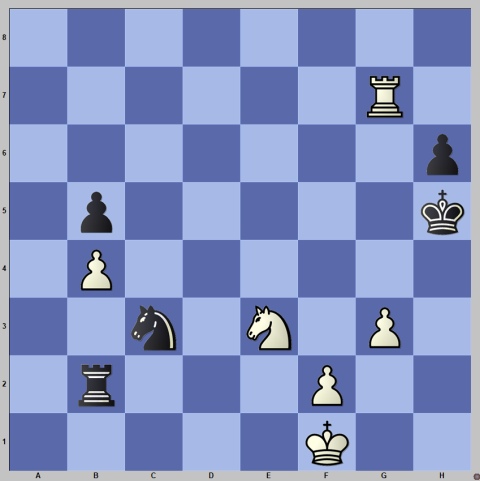
Black had to give up an exchange to save the king, but that didn’t save the game.
After the eighth round, the leading trio remained the same, with Antoaneta Stefanova, Anna Muzychuk and Rameshbabu Vaishali on 6 out of 8. They are followed by Sophie Milliet, Leya Garifullina, Tan Zhongyi and Batkhuyag Munguntuul, half a point behind.
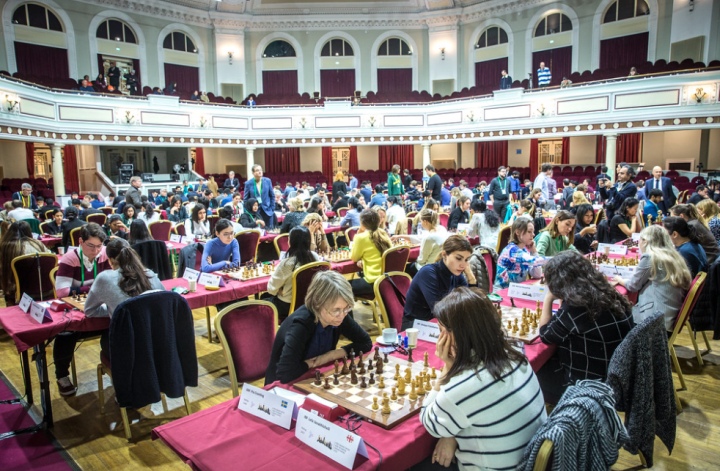
Fans can follow the Grand Swiss 2023 by watching live broadcasts of the event on FIDE Youtube and Twitch with expert commentary by GM David Howell and IM Jovanka Houska.
Round 9 will be played on November 3.
Written by GM Alex Colovic
Photos: Anna Shtourman and Maria Emelianova/Chess.com
Official website: grandswiss.fide.com
About the event:
The FIDE Grand Swiss and FIDE Women’s Grand Swiss 2023 takes place from the 23rd of October to the 6th of November at the Villa Marina, Douglas, Isle of Man.
Both tournaments are part of the qualifications for the World Championship cycle, with the top two players in the open event qualifying for the 2024 Candidates Tournament and the top two players in the Women’s Grand Swiss qualifying for the 2024 Women’s Candidates.
Eleven rounds will be played under the Swiss System, with 164 players participating from all continents: 114 in the Grand Swiss and 50 players in the Women’s Grand Swiss.
The total prize fund is $600,000, with $460,000 for the Grand Swiss and $140,000 for the Women’s Grand Swiss.
The first Grand Swiss was held in 2019 in the Isle of Man and was won by GM Wang Hao, who scored 8/11. The 2021 edition was moved from Isle of Man to Riga due to Covid restrictions on the island and was won by GM Alireza Firouzja.
This is the second time that a Women’s Grand Swiss event will be held. The inaugural edition in Riga was won by GM Lei Tingjie.
Organizers and Partners:








